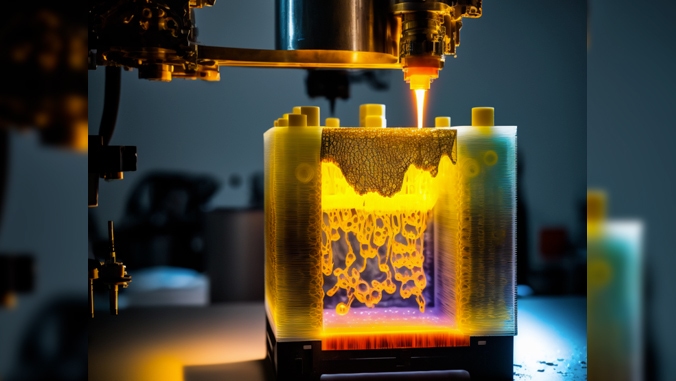ʻi at Mānoa College of Engineering Assistant Professor Tyler Ray has earned a two-year, $237,916 grant from the National Science Foundation (NSF) to explore innovative fabrication techniques for creating high-capacity batteries.
More from the News
This research aims to address the challenges currently faced in the production of silicon nanoparticle electrodes, a promising material for high-capacity batteries with applications in industries such as electric vehicles, power systems and medical devices. The project aims to develop a scalable and robust method of manufacturing silicon nanoparticle electrodes, with the ultimate goal of advancing battery technology through the use of additive manufacturing (3D printing).
Ray, an assistant professor in the Department of Mechanical Engineering, expressed gratitude for the NSF‘s support and excitement for the opportunity to investigate the potential of silicon nanoparticle electrodes.
“There is a pressing need for battery technology with enhanced storage capacity, and we are thrilled to have the chance to explore the use of additive manufacturing to create materials that could meet this demand,” Ray said.
This project is supported by the NSF’s Research Infrastructure Improvement Track-4 EPSCoR Research Fellows program, which seeks to transform the career trajectories of early career investigators through extended collaborative visits to the nation’s premier private, governmental or academic research centers.
Ray will visit the NSF-supported Materials Research Laboratory (MRL) at the University of California, Santa Barbara, one of the top five materials research facilities in the world. Ray will work with Distinguished Professor Ram Seshadri, the Fred and Linda R. Wudl Chair in Materials Science, to establish long-term research collaborations and training opportunities between the two universities, including the creation of a student exchange program for undergraduate researchers.
“We hope the training and collaboration opportunities provided by this grant will not only benefit our team, but also have a lasting impact on the next generation of scientists and engineers in Hawaiʻi,” Ray said. “We are grateful for the opportunity to work with the MRL and Professor Seshadri, and look forward to establishing a mutually beneficial student exchange program that will provide invaluable experience for our students.”
Subscribe to AM Chronicle Newsletter to stay connected: https://bit.ly/3fBZ1mP
Follow us on LinkedIn: https://bit.ly/3IjhrFq
Visit for more interesting content on additive manufacturing: https://amchronicle.com


